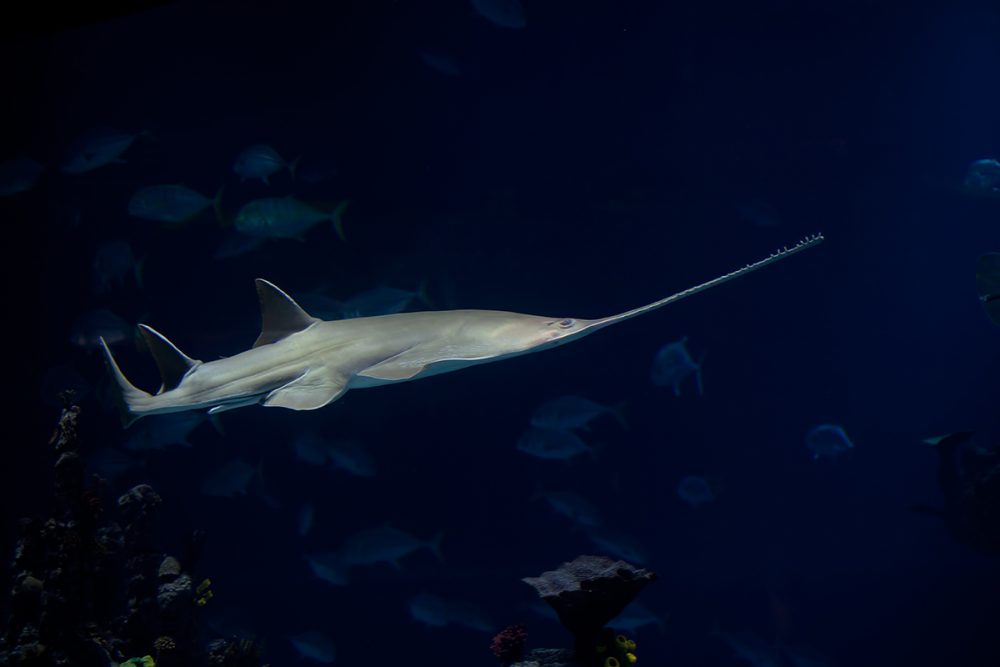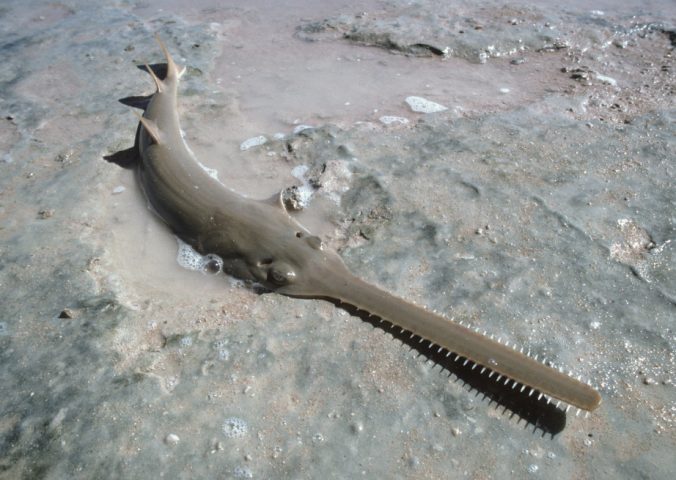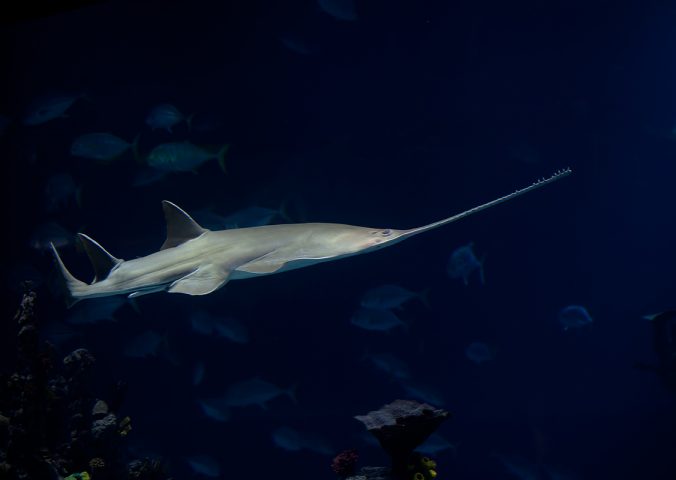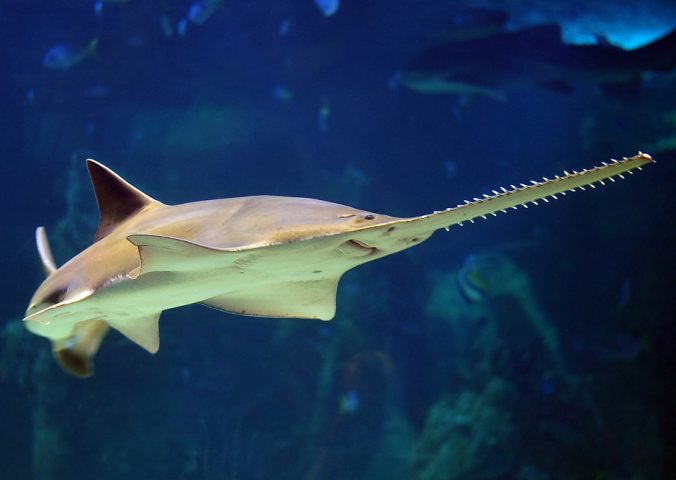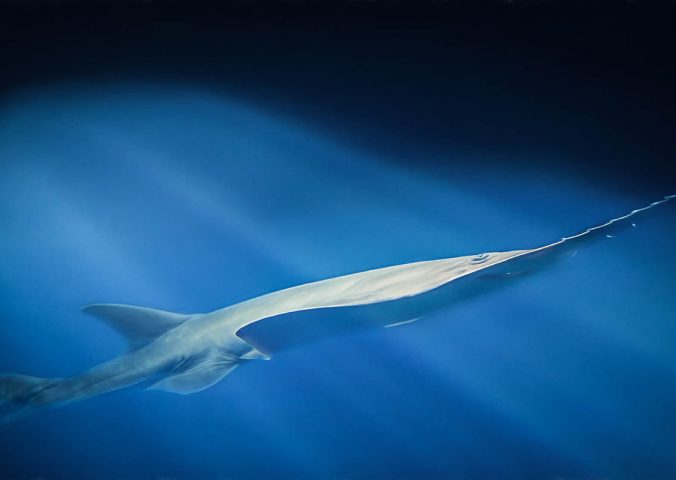About
The green sawfish is the largest of all existing sawfishes, reaching up to 7.3 meters in length and its teethed rostra accounts for almost one third of that length!
Also known around the world as the longcomb, narrowsnout, or olive sawfish, this species shows a distinct greenish-brown coloration on the dorsal side of its body. The green sawfish is the largest of the sawfish species and can live for up to 50 years! Whilst this species can reach a length of 7m in recent years individuals larger than 6m are rarely encountered.
Individuals reach maturity at nine years and females have litters of approximately 12 pups. The green sawfish reproduce through yolk-sac viviparity, in which the embryos feed exclusively from the egg’s yolk inside the females, and the live young are born 80cm long.
Juveniles, similar to other sawfish species, spend their early years in shallow estuarine systems. This species, along with many other elasmobranch species (cartilaginous fishes – skeleton is made of cartilage rather than bone), have seen dramatic population declines and are slow to recover due to their reproductive rate. Their toothed rostra can become tangled in fishing nets and many individuals end up as bycatch – the primary reason for their severe population declines. The green sawfish is listed on Appendix I of CITES, banning all international trade of this species and it is protected by a no-take status in parts of its range, such as Australia, Bahrain and India.
- Order: Rhinopristiformes
- Family: Pristidae
- Population: Unknown
- Trend: decreasing
- Size: Up to 7.3m (?)
- Depth Range (m): Coastal
EDGE Score
Distribution
The green sawfish has a broad Indo-West Pacific distribution from South Africa to Southern China. It is the most poleward ranging of any sawfish species as it is tolerant of cooler temperatures, even has been recorded as far south as New South Wales, Australia.
Habitat and Ecology
This species lives in shallow coastal waters, but has also been encountered in water as deep as 70m. They feed primarily on fish and prawns and reproduce via aplacental viviparity, in which there is no placental connection and the young are supplied with nutrients from yolk before being born as live young. Litter size is 12 pups.
